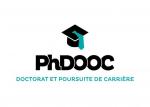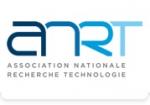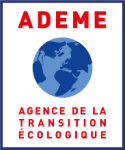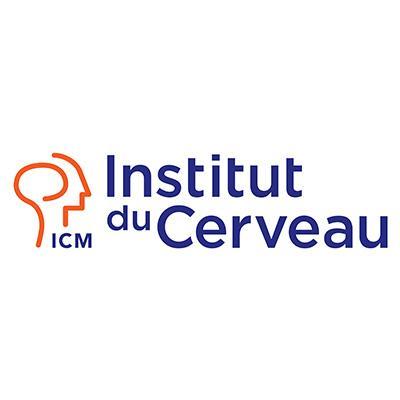RÉGULATION MULTI-ÉCHELLE DES GÈNES SOUMIS À EMPREINTE LORS DE L'ACQUISITION D'UNE IDENTITÉ NEURALE // MULTISCALE REGULATION OF IMPRINTED GENE DURING NEURAL COMMITMENT
|
ABG-130624
ADUM-62530 |
Sujet de Thèse | |
| 08/04/2025 | Contrat doctoral |
Université Clermont Auvergne
CLERMONT-FERRAND - France
RÉGULATION MULTI-ÉCHELLE DES GÈNES SOUMIS À EMPREINTE LORS DE L'ACQUISITION D'UNE IDENTITÉ NEURALE // MULTISCALE REGULATION OF IMPRINTED GENE DURING NEURAL COMMITMENT
- Biologie
Epigénétique , Empreinte parentale, cerveau, regulation à distance, genome 3D
Epigenetics, Genomic Imprinting, Brain, cis remote control of gene expression , 3D genome
Epigenetics, Genomic Imprinting, Brain, cis remote control of gene expression , 3D genome
Description du sujet
L'empreinte génomique est un processus épigénétique clé dans lequel environ 150 gènes de mammifères sont exprimés selon leur origine parentale. Ces gènes sont nécessaires à des processus biologiques clés, notamment la fonction cérébrale et le comportement. Au niveau moléculaire ils sont regroupés dans une vingtaine de domaines, chacun régulé par une courte région génomique nommée « Imprinting Control Région» (ICR) et l'action concertée d'autres régions cis-régulatrices, de modification d'histones et de la structuration 3D de la chromatine. Toutefois, les mécanismes qui coordonnent cette régulation multi-échelle et permettent à l'ICR d'instruire à distance l'expression mono-allélique des gènes du domaine restent mal connus. L'objectif de projet de thèse, est de caractériser la régulation fine des domaines d'empreinte au cours de l'acquisition d'une identité neurale. Une ressource allélique intégrative multi- échelle établie par l'équipe hôte sur un modèle d'organoïde cérébral (culture 3D) de souris permettra d'explorer comment les facteurs de transcription, les signatures chromatiniennes et la conformation 3D interagissent pour réguler l'expression soumise à empreinte au cours de l'engagement neural. Un modèle de régulation sera construit à partir de l'exploration de cette ressource et testé en utilisant une gamme d'approches moléculaires, cellulaires, d'imagerie et fonctionnelles.
Articles associés:
Maupetit-Méhouas S et al., (2016). Imprinting control regions are marked by mono-allelic bivalent chromatin when transcriptionally inactive. NAR, 44:621.
Rengifo Rojas C et al., (2024) Biallelic non-productive enhancer-promoter interactions precede imprinted expression of Kcnk9 during mouse neural commitment. HGG Adv.30:100271.
------------------------------------------------------------------------------------------------------------------------------------------------------------------------
------------------------------------------------------------------------------------------------------------------------------------------------------------------------
Genomic imprinting is a key epigenetic process in which around 150 mammalian genes are expressed according to their parental origin. These genes are required for key biological processes, including brain function and behaviour. At the molecular level, they are grouped into twenty thee domains, each regulated by a short genomic region called the Imprinting Control Region (ICR) and the concerted action of other cis-regulatory regions, histone modification and 3D chromatin looping. However, the mechanisms that coordinate this multi- scale regulation and enable the ICR to remotely instruct the mono-allelic expression of the domain's genes during the acquisition of a cellular identity remain poorly understood. The aim of this thesis project is to characterise the fine regulation of imprinting domains during the acquisition of a neural identity. A multi-scale integrative allelic resource established by the host team on a mouse brain organoid model (3D culture) will be used to explore how transcription factors, chromatin signatures and 3D conformation interact to regulate expression subject to imprinting during neural commitment. A regulatory model will be constructed from the exploration of this resource and tested using a range of molecular, cellular, imaging and functional approaches.
Related publications
Maupetit-Méhouas S et al., (2016). Imprinting control regions are marked by mono-allelic bivalent chromatin when transcriptionally inactive. NAR, 44:621.
Rengifo Rojas C et al., (2024) Biallelic non-productive enhancer-promoter interactions precede imprinted expression of Kcnk9 during mouse neural commitment. HGG Adv.30:100271.
------------------------------------------------------------------------------------------------------------------------------------------------------------------------
------------------------------------------------------------------------------------------------------------------------------------------------------------------------
Début de la thèse : 01/10/2025
Articles associés:
Maupetit-Méhouas S et al., (2016). Imprinting control regions are marked by mono-allelic bivalent chromatin when transcriptionally inactive. NAR, 44:621.
Rengifo Rojas C et al., (2024) Biallelic non-productive enhancer-promoter interactions precede imprinted expression of Kcnk9 during mouse neural commitment. HGG Adv.30:100271.
------------------------------------------------------------------------------------------------------------------------------------------------------------------------
------------------------------------------------------------------------------------------------------------------------------------------------------------------------
Genomic imprinting is a key epigenetic process in which around 150 mammalian genes are expressed according to their parental origin. These genes are required for key biological processes, including brain function and behaviour. At the molecular level, they are grouped into twenty thee domains, each regulated by a short genomic region called the Imprinting Control Region (ICR) and the concerted action of other cis-regulatory regions, histone modification and 3D chromatin looping. However, the mechanisms that coordinate this multi- scale regulation and enable the ICR to remotely instruct the mono-allelic expression of the domain's genes during the acquisition of a cellular identity remain poorly understood. The aim of this thesis project is to characterise the fine regulation of imprinting domains during the acquisition of a neural identity. A multi-scale integrative allelic resource established by the host team on a mouse brain organoid model (3D culture) will be used to explore how transcription factors, chromatin signatures and 3D conformation interact to regulate expression subject to imprinting during neural commitment. A regulatory model will be constructed from the exploration of this resource and tested using a range of molecular, cellular, imaging and functional approaches.
Related publications
Maupetit-Méhouas S et al., (2016). Imprinting control regions are marked by mono-allelic bivalent chromatin when transcriptionally inactive. NAR, 44:621.
Rengifo Rojas C et al., (2024) Biallelic non-productive enhancer-promoter interactions precede imprinted expression of Kcnk9 during mouse neural commitment. HGG Adv.30:100271.
------------------------------------------------------------------------------------------------------------------------------------------------------------------------
------------------------------------------------------------------------------------------------------------------------------------------------------------------------
Début de la thèse : 01/10/2025
Nature du financement
Contrat doctoral
Précisions sur le financement
Concours pour un contrat doctoral
Présentation établissement et labo d'accueil
Université Clermont Auvergne
Etablissement délivrant le doctorat
Université Clermont Auvergne
Ecole doctorale
65 Sciences de la Vie, Santé, Agronomie, Environnement
Profil du candidat
Profil:
- Titulaire d'un Master 2 en biologie
- être motivé par la thématique de la régulation épigénétique et s'impliquer dans la recherche et l'analyse bibliographique
- aimer travailler en équipe
- bonnes capacités à communiquer à l'oral et à l'écrit
Compétences
- Connaissances approfondies, même théoriques, en biologie moléculaire et épigénétique
- Connaissances générales en biologie cellulaire
-notions en édition du génome et traitement des données -omique serait un plus.
- Connaissance de la réglementation en matière d'hygiène et sécurité
- Langue: bon niveau en anglais lu, écrit, parlé
Profile: Holder of a Master's degree (M2) in Biology Motivated by the topic of epigenetic regulation and eager to engage in research and bibliographic analysis Enjoys working in a team Strong oral and written communication skills Skills: In-depth knowledge, even theoretical, of molecular biology and epigenetics General knowledge of cell biology Familiarity with genome editing and -omics data processing would be a plus Understanding of hygiene and safety regulations Language: Good level of English (reading, writing, and speaking)
Profile: Holder of a Master's degree (M2) in Biology Motivated by the topic of epigenetic regulation and eager to engage in research and bibliographic analysis Enjoys working in a team Strong oral and written communication skills Skills: In-depth knowledge, even theoretical, of molecular biology and epigenetics General knowledge of cell biology Familiarity with genome editing and -omics data processing would be a plus Understanding of hygiene and safety regulations Language: Good level of English (reading, writing, and speaking)
19/06/2025
Postuler
Fermer
Vous avez déjà un compte ?
Nouvel utilisateur ?
Besoin d'informations sur l'ABG ?
Vous souhaitez recevoir nos infolettres ?
Découvrez nos adhérents
 Institut Sup'biotech de Paris
Institut Sup'biotech de Paris  ONERA - The French Aerospace Lab
ONERA - The French Aerospace Lab  Généthon
Généthon  TotalEnergies
TotalEnergies  CASDEN
CASDEN  Nokia Bell Labs France
Nokia Bell Labs France  SUEZ
SUEZ  PhDOOC
PhDOOC  Tecknowmetrix
Tecknowmetrix  ANRT
ANRT  Aérocentre, Pôle d'excellence régional
Aérocentre, Pôle d'excellence régional  ADEME
ADEME  Groupe AFNOR - Association française de normalisation
Groupe AFNOR - Association française de normalisation  MabDesign
MabDesign  ASNR - Autorité de sûreté nucléaire et de radioprotection - Siège
ASNR - Autorité de sûreté nucléaire et de radioprotection - Siège  CESI
CESI  Ifremer
Ifremer  MabDesign
MabDesign  Laboratoire National de Métrologie et d'Essais - LNE
Laboratoire National de Métrologie et d'Essais - LNE








